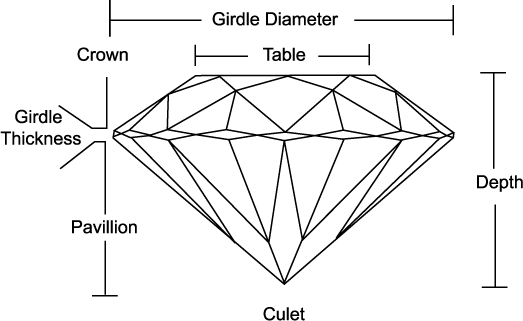How to Buy a Diamond
Most folks are overwhelmed by the experience of shopping for a diamond. Many are somewhat familiar with the “four Cs” (Cut, Color, Clarity and Carat weight) but are not sure what each term means, which of them are more important, and how they interplay. Therefore some choose to visit a jeweler referred by a friend or a relative. Unfortunately most jewelers have a very few diamonds in stock and are dependent upon the inventory of a couple of diamond wholesalers. A few decide to browse some diamond selling websites. However, diamonds displayed on these websites rarely belong to the online retailers. In fact one may come across the same diamond simultaneously displayed on several competing websites. Besides, an online retailer, say from Seattle may be selling diamonds belonging to several diamond dealers in New York, Los Angeles, Chicago, etc; and never see the diamonds they are selling.
Due to lack of clear education provided by the stores and somewhat confusing information on diamonds selling websites some folks settle upon diamonds certified by the Gemological Institute of America (GIA), the top gem certification laboratory.
Having a GIA certificate does not guarantee that a diamond is of high quality.
Therefore before buying a diamond one must understand all the Four C’s and polish, symmetry, fluorescence, girdle thickness, culet size, diamond treatments, etc. And although, diamond is the hardest natural substance it can break and chip. Therefore care must be taken to avoid buying a diamond that could potentially break or chip down the road.

Diamonds that appear similar may have vastly different values. Just as with any other transaction, one must understand exactly what he or she is purchasing regardless of the budget.
For most folks it is a challenge to select a correctly-graded, properly-cut bright diamond that will not chip or break.
In this section, we shall discuss not only the Four C’s (cut, color, clarity, carat) but other important diamond-related attributes like polish & symmetry, fluorescence, girdle thickness, culet size, and diamond treatments.
The Gemological Institute of America (GIA) established a system for grading diamonds, commonly known as the Four C's. It is worth noting that this system can only be accurately applied when the diamond is not mounted. Therefore as much as possible buyers must avoid buying diamonds that are mounted. Also buyers must avoid buying diamonds that are graded with a range of qualities; for example. Color: G – H, Clarity: VS2 – SI1.
A Well-Balanced Diamond
For a given dollar amount one must buy a diamond that gives the best overall value with respect to all the Four C’s.
A well proportioned H color SI1 clarity diamond will shine much better than a J color VS1 clarity; and a G color VS2 clarity diamond with "None" Fluorescence will shine better than a D color VS1 diamond with "Strong" Fluorescence.
If super high clarity is not absolutely essential one should avoid buying diamonds like H color VVS1 clarity or K color with Flawless clarity.
Diamond Care
Diamond is the hardest natural substance. They are resistant to damage by heat or scratching and can be cut or polished only by another diamond. However, an extremely hard blow to the girdle can chip a diamond. Therefore, one must avoid buying diamonds with “Extremely Thin” girdles. This is especially true for “Princess Cut” diamonds, which have sharp corners. Periodic cleaning with a mixture of ammonia and water will keep the diamond sparkling.
Treated Diamonds
There are several processes to artificially enhance the color and mask the natural flaws of diamonds. Some of these treatments are not permanent. For example, a fracture-filled diamond could show the fractures after few years of use. Some treatments are difficult for even a gemologist to detect.
Some treated diamonds remain radioactively “hot” for several years.
Treated diamonds are obviously worth substantially less than their non-treated counterparts. The purchase of treated diamonds should be done with caution and with awareness of the potential risks involved.
We do not sell treated or clarity enhanced diamonds.
Buying diamonds on the internet
Selecting a correctly graded, properly cut, bright, and durable diamond especially on the internet can be a challenge. Most websites list thousands of diamonds. However, diamonds displayed on these websites rarely belong to the online retailers.
For example, one popular diamond website lists about fifty similar looking H color, SI1 clarity GIA certified one carat Round diamonds from $4,700 thru $7,000 and about twenty similar-looking one carat D color VS1 GIA certified Princess cut diamonds from $5,300 to $9,000. How could identical looking diamonds be so far apart in price?
Also, there are several counterfeit GIA certified diamonds available in the market and internet would be the perfect avenue to sell these.



